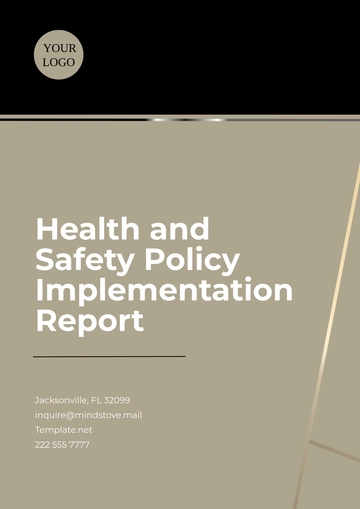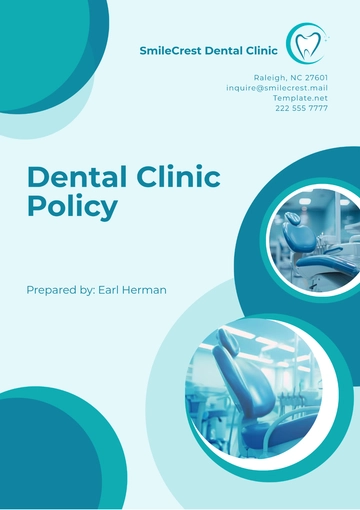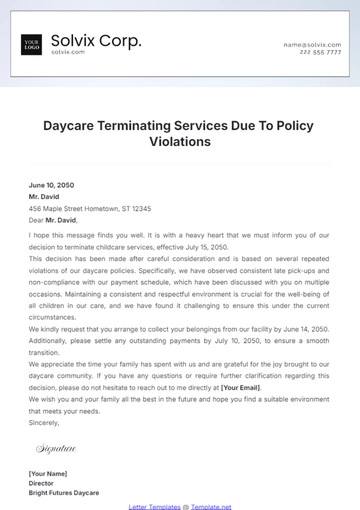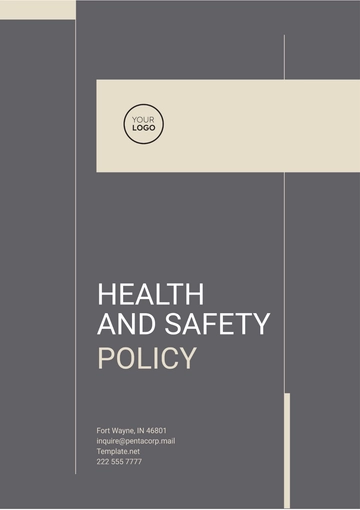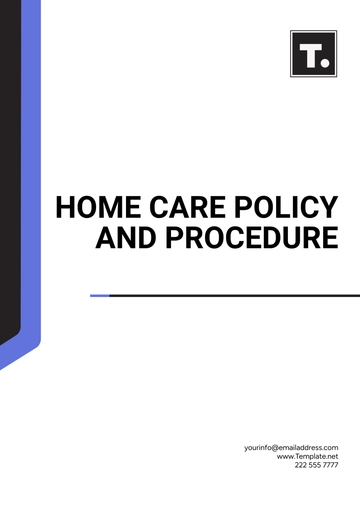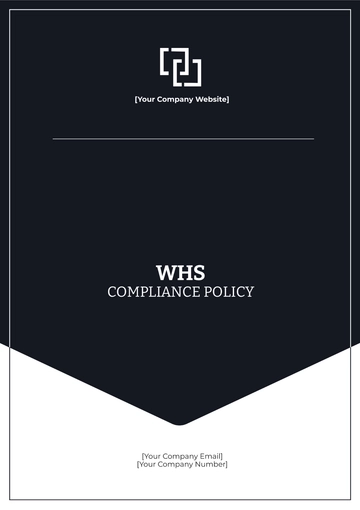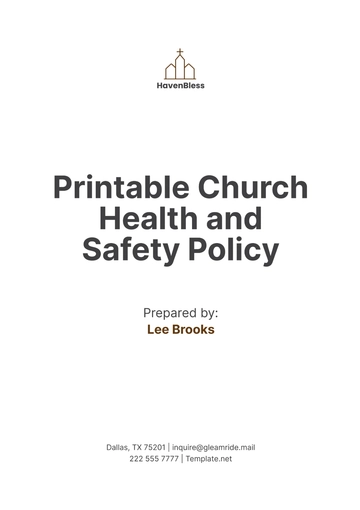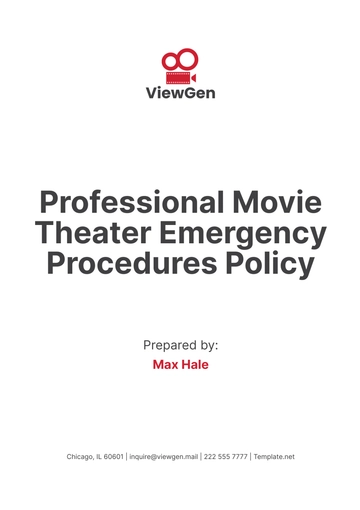Free Nursing Home Leave Policy
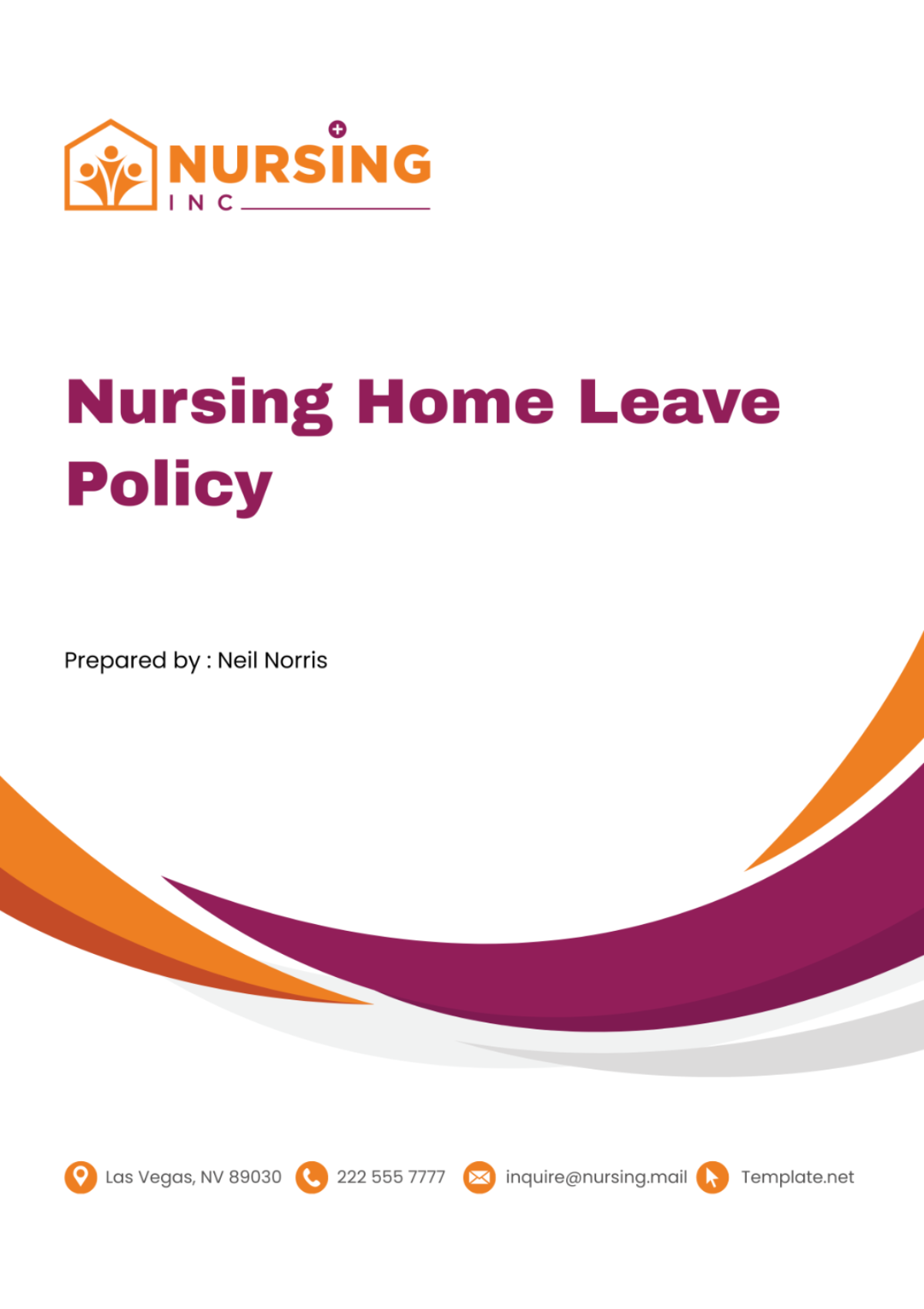
I. Introduction
The Leave Policy of [Your Company Name] is a testament to our commitment to the well-being and rights of our residents. We believe that every individual in our care deserves to be treated with the utmost respect and dignity. Our policy is designed to ensure that we uphold these values in every aspect of our operations, from the daily care we provide to the way we manage periods of absence for our residents.
Our policy recognizes that there may be times when a resident needs to be absent from the nursing home, whether for medical treatment, personal reasons, or other circumstances. We understand that these situations can be challenging for both the resident and their loved ones. Therefore, we have developed this policy to provide clear guidelines and procedures for managing these instances. This ensures that every resident and their family can have peace of mind knowing that their needs will be met, even during periods of absence.
In crafting this policy, we have taken into consideration the unique needs and circumstances of our residents. We have also ensured that our policy is in line with all relevant laws and regulations. This comprehensive approach ensures that our policy not only meets the needs of our residents but also upholds the high standards of care and service that define our nursing home.
II. Scope
The Leave Policy applies to all residents of the nursing home. It is designed to ensure that all residents and their families have a clear understanding of what to expect when a leave of absence is required. This includes:
A. Understanding the Different Types of Leave
The policy outlines the different types of leave that are available, such as medical leave for hospital visits, therapeutic leave for therapy sessions, and personal leave for personal engagements or family visits.
Each type of leave has its own set of guidelines and procedures, which are clearly explained in the policy.
B. Requesting a Leave of Absence
The policy provides detailed instructions on how to request a leave of absence. This includes who to contact, what information to provide, and when to submit the request.
It also outlines the approval process for leave requests, including who is responsible for approving the request and how long the approval process typically takes.
C. Procedures During the Leave and Upon Return
The policy describes what happens during the leave of absence, such as how the resident’s care needs will be met and how communication with the nursing home will be maintained.
It also outlines the procedures for returning from leave, including any necessary health checks or assessments, and how the resident’s care plan will be updated if needed.
III. Policy Objectives
The primary objectives of this policy are to provide clear guidelines about ‘leave of absence’ for residents, ensure that residents and their families are supported during periods of absence, and ensure that residents continue to receive the care they need during their leave of absence.
A. Providing Clear Guidelines
Transparency: The policy aims to provide transparency about the different types of leave that are available, such as medical leave for hospital visits, therapeutic leave for therapy sessions, and personal leave for personal engagements or family visits.
Understanding: It is designed to help residents and their families understand the procedures for requesting and taking leave, including who to contact, what information to provide, and when to submit the request.
Expectations: The policy sets clear expectations about what happens during the leave and upon the resident’s return, including any necessary health checks or assessments, and how the resident’s care plan will be updated if needed.
B. Supporting Residents and Families
Communication: The policy emphasizes the importance of maintaining open and regular communication with residents and their families during periods of absence. This includes providing updates about the resident’s care and responding to any questions or concerns.
Coordination: It outlines the role of the nursing home in coordinating care with external healthcare providers if necessary, and in making arrangements for the resident’s return.
Flexibility: The policy recognizes that each resident’s situation is unique and allows for flexibility in implementing the leave provisions based on the resident’s specific needs and circumstances.
IV. Leave Policy Guidelines
The Leave Policy includes provisions for different types of leave. Each type of leave serves a specific purpose and has its own set of guidelines and procedures:
A. Hospital Leave
Definition: Hospital leave is provided for residents who require specialized medical services outside the nursing home. This could include surgeries, treatments, or other medical procedures that cannot be provided within the nursing home.
Duration: The duration of the hospital leave continues until the resident returns back to the nursing home from the hospital. The exact length of the leave will depend on the resident’s medical needs and the recommendations of their healthcare provider.
Procedures: During the hospital leave, the nursing home will maintain communication with the hospital and the resident’s family to monitor the resident’s condition and plan for their return. Upon return, the resident’s care plan will be reviewed and updated as necessary based on their current health status.
B. Therapeutic Leave
Definition: Therapeutic leave is granted for therapy sessions or medical consultations that cannot be provided within the nursing home. This could include physical therapy, occupational therapy, or specialist consultations.
Duration: The resident is expected to return no later than 8 hours post-departure. If the stay extends beyond 8 hours, the leave would switch to ‘overnight therapeutic leave’.
Procedures: The nursing home will coordinate with the therapy provider or medical specialist to ensure continuity of care. Upon return, the resident’s care plan will be reviewed and any recommendations from the therapy session or consultation will be incorporated.
C. Personal Leave
Definition: Personal leave covers instances where residents wish to leave the nursing home for personal requirements or engagements, or wish to spend time with their family or loved ones.
Duration: The duration of this leave should not exceed 18 consecutive days. After 18 days, the resident will need to reapply for their bed or a similar one upon their return.
Procedures: During the personal leave, the nursing home will maintain communication with the resident and their family to ensure the resident’s well-being. Upon return, the resident will be reintegrated into the nursing home community and their care plan will be reviewed and updated as necessary.
V. Leave Request Process
The Leave Request Process is a crucial part of the Leave Policy. It ensures that all leave requests are handled in a consistent and fair manner. The following table provides an overview of the key steps in the leave request process:
Step | Description |
|---|---|
1. Request Submission | The resident or their family submits a leave request to the nursing home administration. |
2. Request Review | The administration reviews the request while taking into considerations. |
3. Approval/Rejection | The administration approves or rejects the leave request. |
4. Leave Management | During the leave, the administration maintains communication with the resident and their family. |
5. Return Management | Upon the resident’s return, the administration conducts a health check-up. |
A. Request Submission
This is the first step in the leave request process. It’s important that the resident or their family provide as much information as possible about the reason for the leave, the expected duration, and any special care needs the resident may have during the leave. This information will help the administration to make an informed decision about the leave request.
B. Request Review
During this step, the administration reviews the leave request in detail. They consider the resident’s health status, the type of leave requested, and the potential impact on the resident’s care plan. This step ensures that all leave requests are evaluated fairly and consistently.
C. Approval/Rejection
The outcome of the review process is either approval or rejection of the leave request. If the request is approved, the administration works with the resident and their family to plan the leave. If the request is rejected, the administration provides a clear explanation for the decision and discusses possible alternatives with the resident and their family.
D. Leave Management
This step involves managing the resident’s care during the leave. The administration maintains communication with the resident and their family, coordinates care with external healthcare providers if necessary, and prepares for the resident’s return. This step ensures that the resident’s care needs continue to be met while they are on leave.
E. Return Management
Upon the resident’s return, the administration conducts a health check-up, updates the resident’s care plan if necessary, and reintegrates the resident back into the nursing home community. This step ensures a smooth transition back to the nursing home and helps to maintain continuity of care.
The Leave Request Process is a critical part of the Leave Policy. It ensures that all leave requests are handled in a consistent and fair manner, and that residents continue to receive the care they need during their leave. By following this process, the nursing home can effectively manage leaves of absence while maintaining a high standard of care for all residents
VI. Leave Policy Implementation
The implementation of the Leave Policy is a critical aspect of its effectiveness. It involves several key components:
A. Communication of Policy
Policy Accessibility: The Leave Policy is made readily available to all residents and their families. This could be in the form of a handbook, a dedicated section on the nursing home’s website, or informational sessions.
Understanding the Policy: Efforts are made to ensure that all residents and their families understand the policy. This includes explaining the policy in simple, clear language and providing opportunities for residents and families to ask questions.
Updates and Changes: Any updates or changes to the policy are communicated promptly to all residents and their families. This ensures that everyone has the most current information.
B. Training of Staff
Understanding the Policy: All staff members are trained on the Leave Policy. This includes understanding the different types of leave, the procedures for requesting leave, and the responsibilities of staff during a resident’s leave and upon their return.
Role-Specific Training: Staff members receive training specific to their role in implementing the Leave Policy. For example, nursing staff are trained on how to coordinate care with external healthcare providers, while administrative staff are trained on how to process leave requests.
Ongoing Training: Training on the Leave Policy is included as part of the ongoing professional development for all staff. This ensures that all staff members’ knowledge of the policy remains current and accurate.
C. Monitoring and Evaluation
Policy Adherence: The nursing home regularly monitors adherence to the Leave Policy. This includes reviewing leave records to ensure that the policy’s guidelines are being followed.
Resident Feedback: Feedback from residents and their families is actively sought and used to evaluate the effectiveness of the Leave Policy. This feedback can provide valuable insights into how the policy is working in practice and where improvements may be needed.
Policy Review: The Leave Policy is regularly reviewed and updated based on the results of monitoring and evaluation activities. This ensures that the policy continues to meet the needs of residents and aligns with current best practices.
- 100% Customizable, free editor
- Access 1 Million+ Templates, photo’s & graphics
- Download or share as a template
- Click and replace photos, graphics, text, backgrounds
- Resize, crop, AI write & more
- Access advanced editor
Facilitate seamless leave management with this editable Nursing Home Leave Policy Template from Template.net! This customizable template provides a clear framework for managing employee absences, ensuring that leave requests are processed efficiently and fairly! Utilize the AI Editor Tool to tailor the template easily! Streamline the leave management process now!
You may also like
- HR Policy
- Restaurant Policy
- Company Policy
- Accounting Policies and Procedures
- Website Policy
- Privacy Policy
- Safety Policy
- School Policy
- IT and Software Policy
- Law Firm Policy
- Construction Policy
- Interior Design Policy
- Travel Agency Policy
- Education Academic Policy
- Security Policy
- Real Estate Policy
- Expense Policy
- Software Policy



